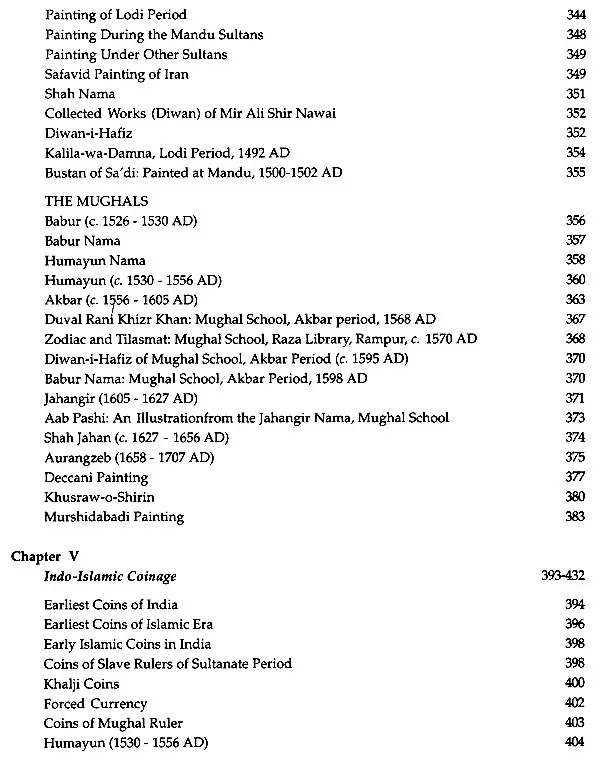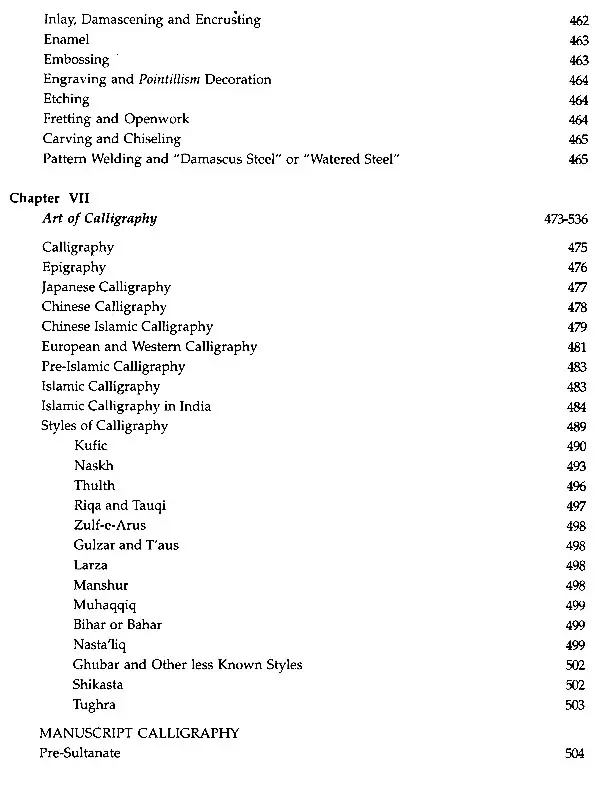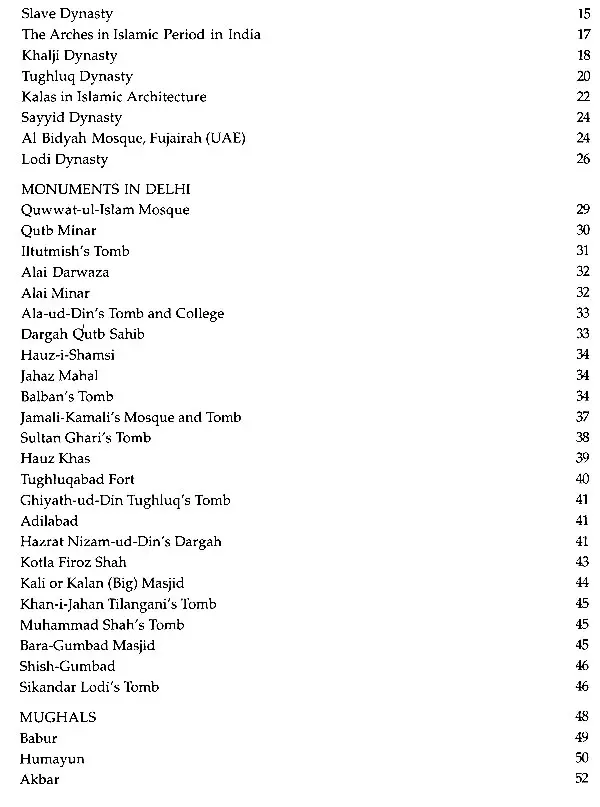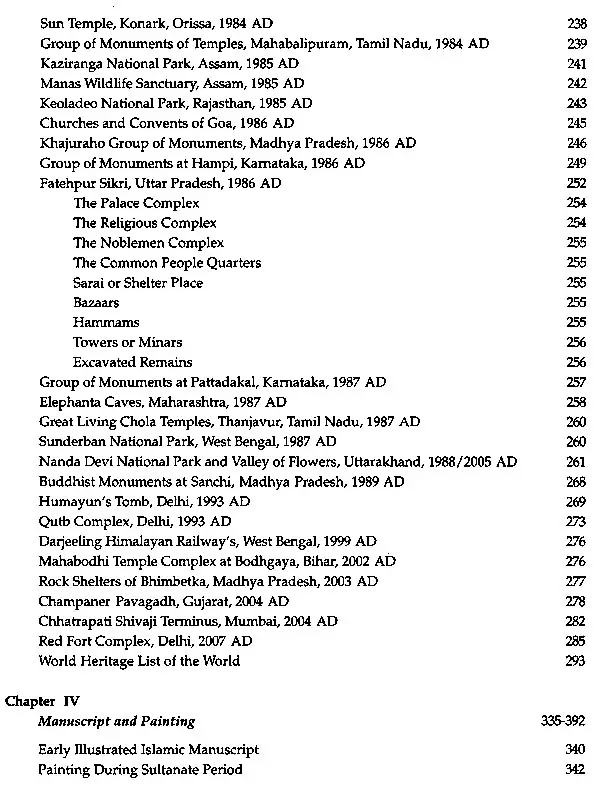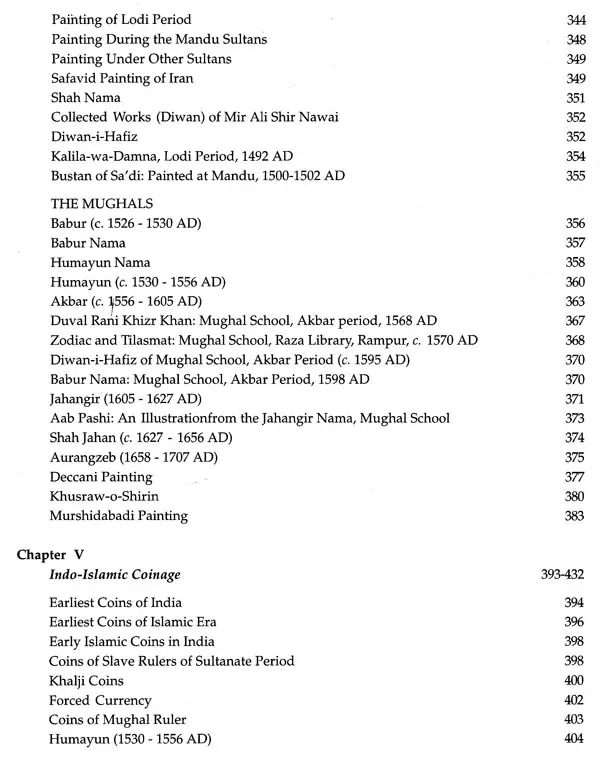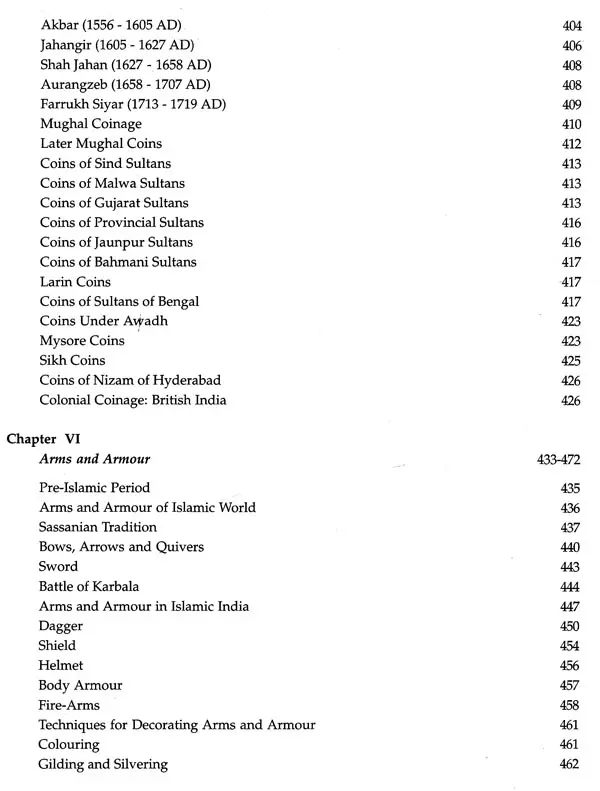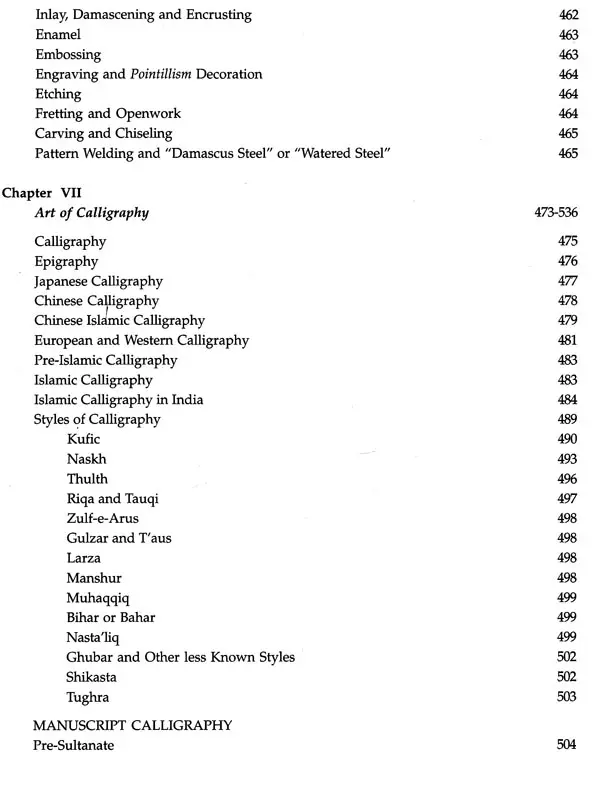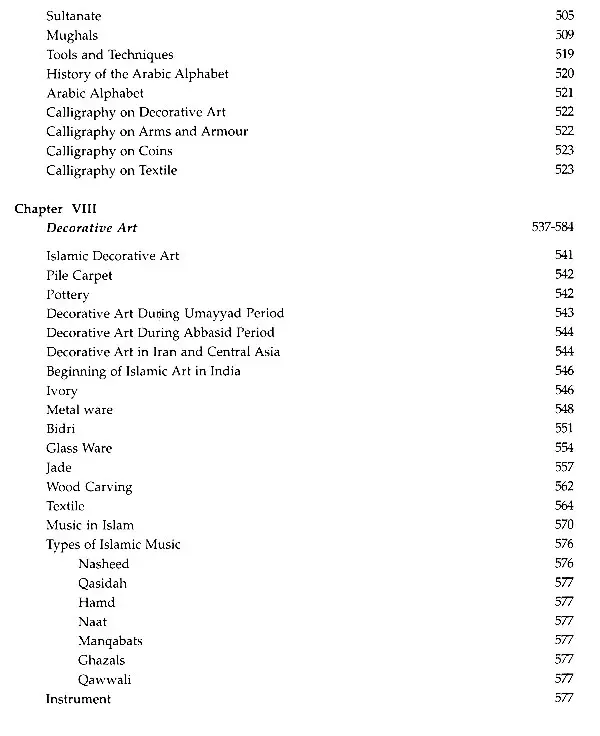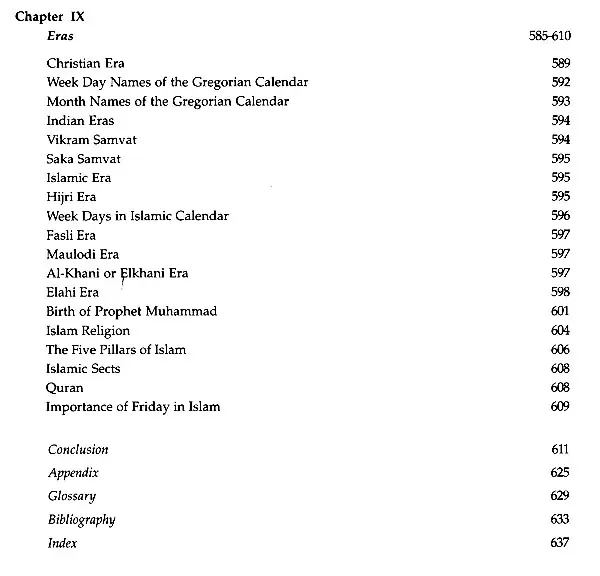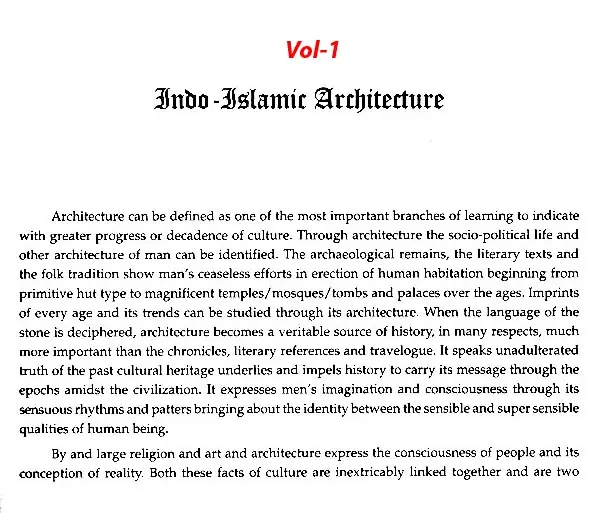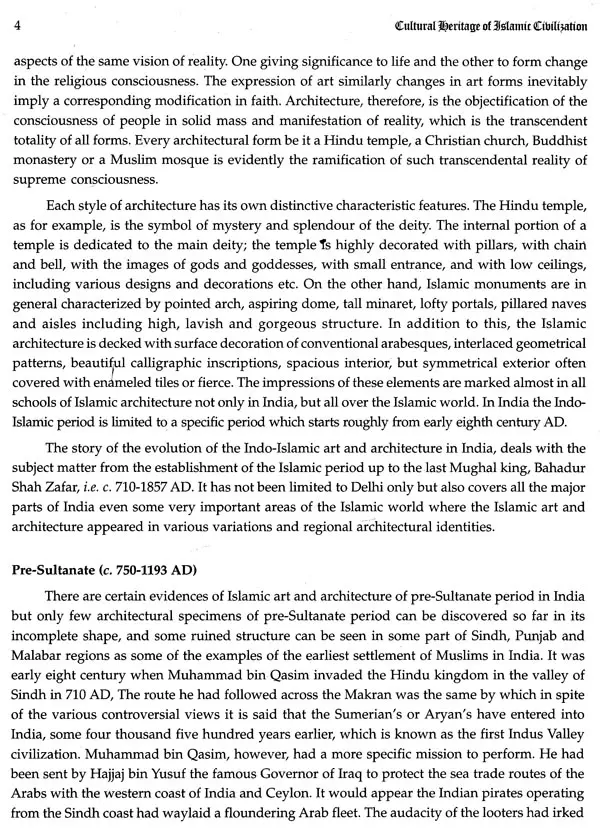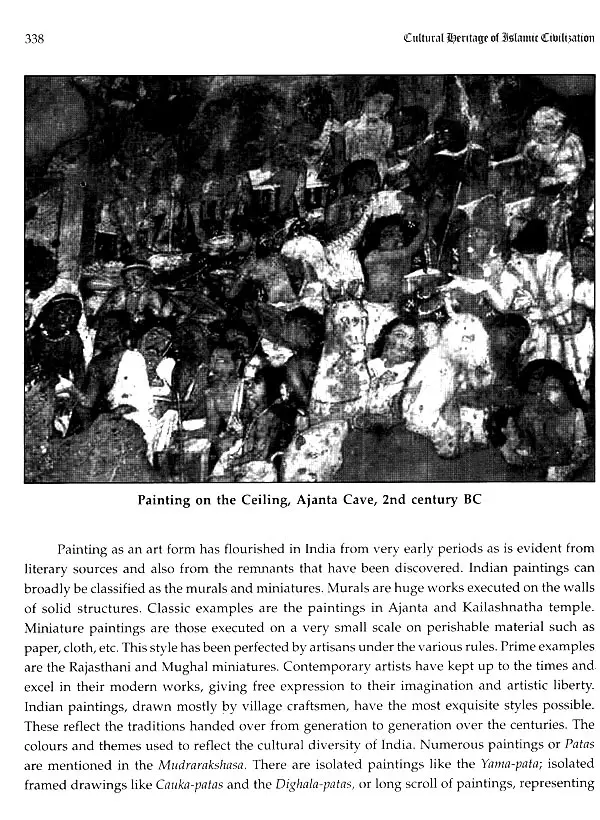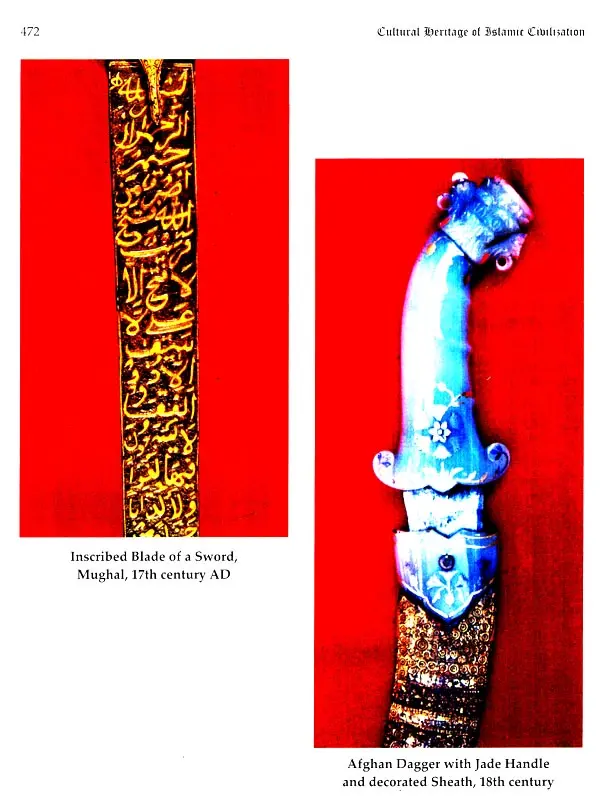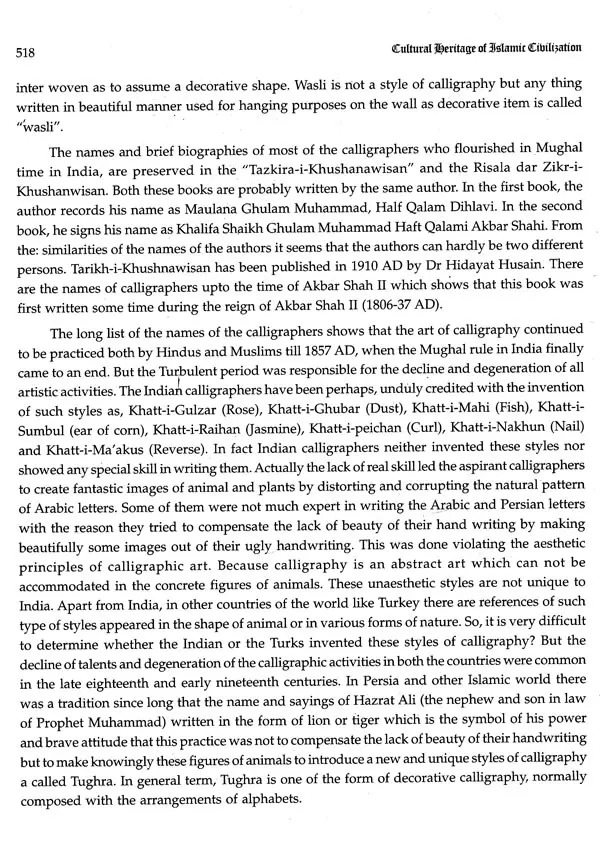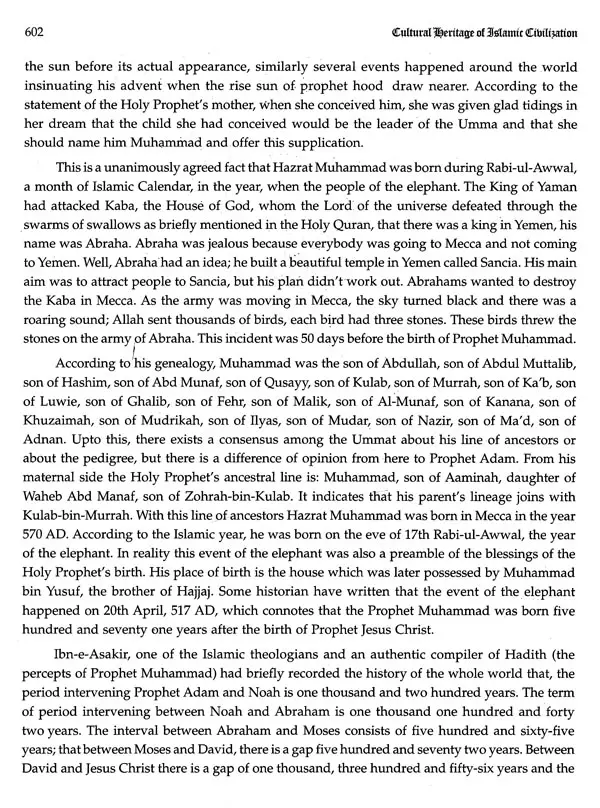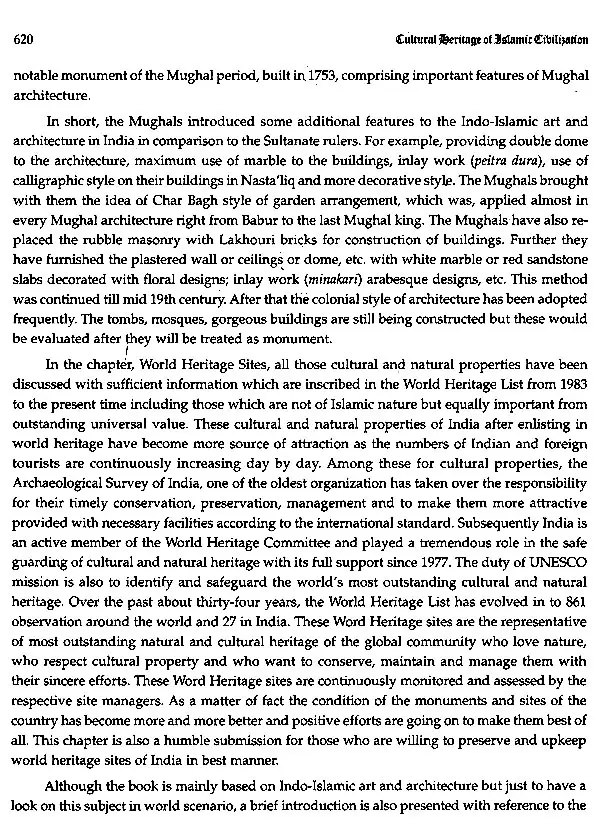
Cultural Heritage of Islamic Civilization (Set of 2 Vol.)
Book Specification
| Item Code: | UAE973 |
| Author: | Atiq R. Siddiqui |
| Publisher: | Sharada Publishing House |
| Language: | English |
| Edition: | 2010 |
| ISBN: | 9788188934638 |
| Pages: | 709 (Throughout Color and B/W Illustrations) |
| Cover: | HARDCOVER |
| Other Details | 11.00 X 9.00 inch |
| Weight | 3.54 kg |
Book Description
The book is exclusively based on "Indo-Islamic" period in India with special reference to the history, art, architecture, fine art & cultural heritage of Islamic world. This is a stimulating and perceptive survey of oriental civilizations and traces their evolution from the earliest period of Islamic era to the dawn of modern age. The history and traditional values of Islam and Islamic art & architecture of other regions of the world are also been pointed out and provides a guiding thread among the various styles and periods about the Islamic cultural heritage. The traditions of five major strands comprising Arab, Iranian, Turkish, central Asian and Indian have been described which ultimately named as "Islamic Civilization". During this period the built heritage produced in the form of architecture and various fine arts under the patronization of Muslim rulers and others developed in India and other part of world is the main subject of study.
The book is mainly based on Islamic art and architecture comprising with nine chapters, such as Indo-Islamic Architecture, Islamic Architecture of the World, World Heritage Monuments and Sites, Manuscript and Painting, Indo-Islamic Coinage, Arms and Armour, Art of Calligraphy, Decorative Art and Eras. Such issues have been discussed in detail with documentary proves and sufficient information.
The book is illuminated with coloured, unique and few rare photographs which enhanced the aesthetic value and a source of attraction not only for academicians, art historians, archaeologists, research scholars but also to a lay man who love to know something about the Cultural Heritage of Islamic Civilization.
Atiq R. Siddiqui, Superintending Archaeology in Agra Circle of the Archaeological Survey of India (ASI) is a well known scholar in the field of archaeology museum, medieval history and Islamic art & architecture for the past three decades.
He started his career as Curator in Red Fort Museum in 1976. Later, he joined the National Museum as the Head of Arms & Armour for five years. Again he joined ASI in 1994 and set up some of the site Museums of coins, paintings, manuscripts, historical weapons and other art objects at various places in the country. Due to his expertise in the field of archaeology and museums, he was deputed to Russia, Germany, France and Czechoslovakia by the Government of India for organizing the exhibitions on Indo-Islamic Art & Architecture.
He is a graduate from Aligarh Muslim University. Due to his out-standing result, he was awarded with National Merit Scholarship and UGC fellowship. He secured the degree of M.A. from University of Delhi and Ph.D. from Jawaharlal Nehru University and is well versed with the classical languages like Arabic, Persian, Turkish, Pashtu and Urdu; as a result he deciphered a good number of inscriptions and calligraphic specimens available on monument, art object, antiquities and manuscripts.
The author has three books and more than hundred articles and papers published in the leading magazines and journals of India and abroad to his credit. He is also known with the pen name of Atiq Anwar Siddiqui as he created hundreds of radio/TV talks, dramas, features, short story and poetry.
The present work "Cultural Heritage of Islamic Civilization" by Dr. Atiq R. Siddiqui is indeed a valuable piece which fills a long standing gap in the art studies. Dr. Siddiqui is a sincere searcher as the choice of such a vast canvas apparently seemed to be difficult to handle but he has done the job with dexterity if not with complete perfection and could ably do justice to the subject. It is really difficult to determine whether the text surpasses the beauty of illustrations or the illustrations decorate the contents. On an overall assessment, the book stands out as a work of academic excellence primarily because it has touched upon some very basic points as well as mess complex ones pertaining to the subjects of different gradation discussed with the same davits- of thought and deeper understanding in each case thus providing an answer to the lay person who may be ashamed of asking elementary questions and simultaneously satiating the this of more knowledgeable experts while addressing more complicated issues and perplexing stuff.
It is also a fact that no one could be more appropriate than him for the task as he is well versed in and well-equipped with the knowledge related to museology and having a first hand comprehension and grasp of other allied and relevant subjects. Being an archaeologist himself and associated with the Archaeological Survey of India, he had better access to the historical buildings, survey reports, maps, photographs, artefacts and objects whose real worth he knew and could evaluate them with ease and depicted them in word portraits efficiently He had remembered to present to the world what he had earned throughout his life. From Jageshwar in Almora district where the thought of writing a work of this nature first dawned upon him to Ratnagiri (District Jajpur) where he continued to toy with the idea and finally, in Orissa where the real ignition to fill on void gripped him. Whether it was the thought provoking book of Mrs, Dewal Mittra or the inspirational excavations at Buddhist sites of Udayagiri or simply acute need of a comparative study facilitated by his appointment at Delhi which had opened before him the grandeur of Turkish rulers, or the cumulative effect of all, the motivation has yielded good results.
The book comprises nine main chapters covering almost all the aspects of fine arts and beyond. Thus, one finds informative chapters with beautiful illustrations on Islamic architecture of world, important structures, UNESCO world heritage monuments, Indian buildings constructed by Sultan of Delhi, Mughal (Timurid) rulers and provincial dynasties; paintings, armour, coinage, calligraphy, decorative art, music, etc. The book is well documented and based on original sources. The interesting part of the hook is its usefulness as a reference book for the entire Islamic art and architecture. Certain details about history of traditional values of Islamic art and architecture are also available. The reader may find in it a good reference book.
The book, entitled, "Cultural Heritage of Islamic Civilization" is mainly based on India's Cultural Heritage, covering a long span of more than thousands of years and is evident all over the country with special reference to the context of Islamic world in general. During this period the built heritage produced in the form of architecture and various fine arts under the patronization of Muslim rulers developed in India and other part of the world is the main subject of study in this monograph. There is a need to highlight and to propagate the idea that the entire Cultural and Natural property of the world is a Heritage of all mankind and to preserve, to maintain and to manage this "Virasat" is the duty and the responsibility of every civilized person. This book is also one of the sincere efforts in this direction. In India, the Archaeological Survey of India and few other organizations have been working for the preservation, conservation and maintenance of all such monuments and sites which have been considered as of National heritage and are a symbol of the representation of composite Culture of India. This cultural heritage of the country is many centuries old, which portray the real and true picture of the hoary past of this country. Till last century the number of National and International tourists was not many more due to many reasons. The travelling facilities were limited and not much comfortable. The direct approach to the monument or to an archaeological site of interest was also a tough task. More over tourist facilities were not provided globally.
Now, the time has changed, the miles distance can be covered in seconds. Travelling facilities and comfortable journey systems are growing very fast. This has made the manias to travel all around the World to know the Cultural property of universal value in better way. ln this direction the role of 'UNESCO." is remarkable in formulating policies to inscribe Cultural and Natural properties of universal outstanding value of the civilized countries the list of World Heritage. Since India has a long and varied cultural civilization, therefore, there are considerable amebas of monuments and ekes of archaeological importance included in the World Heritage List and the process is continuously going on to increase these properties of the past which are representation of various culture, religion, region and style. These can be determined in its manifestation. India's civilization has thus, developed theories and practices of positive pluralism. Pack one could find home here and so India formed with a composite culture comprising of Variety of languages, many religions, various cultures and traditional intangible Heritage of many kind. This India's rich multi-splendour. Cultural Heritage therefore, needs to be preserved for the sake of future generations of this country as well as for the mankind of the World. It is very importance to understand the eternal beauty of India's Heritage in its right direction. Legendary historic personalities, architecture, antiquities, art-objects, illustrated manuscripts, paintings coins, arms and armour, etc, are such sources through which India's brilliant and grand past can be determined. Through this volume, a humble effort has been made to pay my gratitude to the cultural heritage of this country rather Islamic World.
This book is exclusively based on "Indo-Islamic" period in India with special reference t the history, art, architecture and culture of Islamic world. In this book all those issues have been discussed related to the history, art, architecture, or fine art of the Islamic world. The history and traditional values of Islam and Islamic art and architecture of other regions of the world m also been pointed out with reference to the context. However, this Indo-Islamic Cultural Heritage traced its way with the rust invasion, carried out by the Arab forces on Indian will under the leadership of Muhammad bin Qasim, in the year 710-712 AD. Although it was an invasion in early phase but at the same time cultural relations also developed with variety of styles and this cultural development was gradually continued till 1857 AD, upto the last Mughal ruler Bahadur Shah Zafar.




